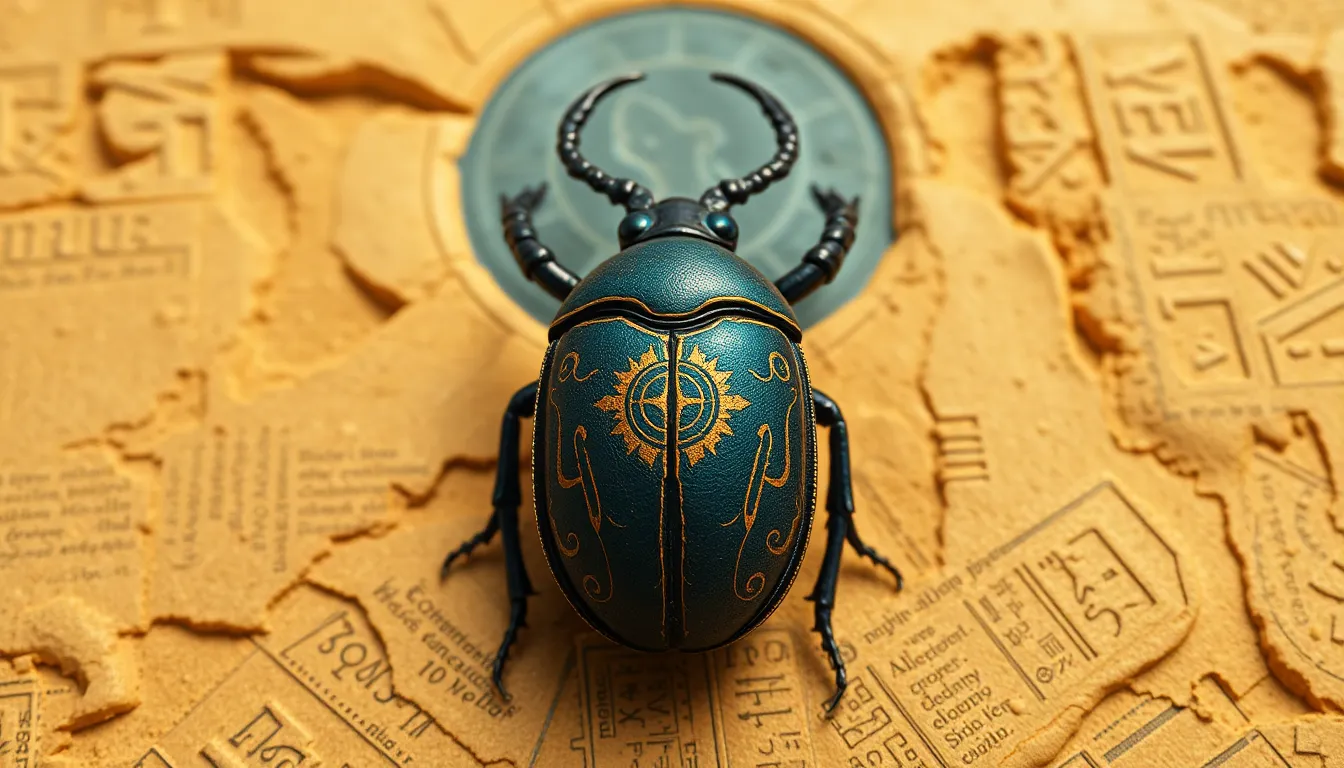The Geography of the Sacred Scarab: Myths and Legends
I. Introduction
The sacred scarab, or scarab beetle, holds a prominent place in ancient cultures, particularly in ancient Egyptian mythology. Revered for its unique life cycle and behaviors, the scarab became a powerful symbol of transformation and renewal. The geography of the Nile River Valley, where these beetles thrived, played a crucial role in shaping the myths and legends that surrounded them.
This article delves into the significance of the sacred scarab, exploring its symbolism, geographic origins, and the myriad myths associated with it. By examining the intricate relationship between geography and mythology, we aim to shed light on the enduring relevance of the sacred scarab.
II. The Sacred Scarab: Symbolism and Meaning
In ancient Egyptian culture, the scarab beetle, specifically the species Scarabaeus sacer, was emblematic of several profound concepts:
- Rebirth and Transformation: The scarab’s behavior of rolling dung into balls was interpreted as a metaphor for the sun’s journey across the sky, symbolizing rebirth and the cycle of life.
- Connection to Ra: The sun god Ra was often associated with the scarab, embodying the idea of renewal and the daily resurrection of the sun.
- Protective Talisman: Scarab amulets were commonly used as protective charms, believed to safeguard the wearer in life and the afterlife.
III. Geographic Origins of the Sacred Scarab
The sacred scarab’s geographic origins are intricately linked to the Nile River Valley, a region rich in biodiversity and ecological significance:
- The Nile River Valley: This fertile region provided the ideal habitat for scarabs, contributing to their symbolic importance in Egyptian culture.
- Scarab Habitats: The presence of dung beetles in this area allowed ancient Egyptians to observe their fascinating behaviors, reinforcing the symbolic connections to life, death, and rebirth.
- Archaeological Findings: Excavations around the Nile have uncovered numerous scarab artifacts, providing insights into their geographic context and cultural significance.
IV. Myths and Legends Surrounding the Sacred Scarab
The sacred scarab is deeply embedded in Egyptian mythology, with various myths highlighting its significance:
- Creation Myths: One myth describes how the god Khepri, often depicted as a scarab, rolled the sun across the sky each day.
- Legends of Resurrection: Scarabs were believed to assist the dead in their journey to the afterlife, symbolizing the hope of rebirth.
Beyond Egypt, the scarab’s symbolism can be found in other cultures as well:
- Parallels in Mesopotamia: Many ancient Near Eastern cultures had their own versions of the scarab myth, often linking it to fertility and renewal.
- Literary Sources: Ancient texts and inscriptions frequently feature the scarab, illustrating its pervasive influence across cultures.
V. The Sacred Scarab in Art and Architecture
The representation of the sacred scarab is prevalent in ancient Egyptian art and architecture:
- Artistic Representation: Scarabs were commonly depicted in bas-reliefs, paintings, and jewelry, signifying their importance in daily life and spirituality.
- Temple Architecture: Scarab motifs adorned temples and tombs, serving both decorative and symbolic purposes in the sacred spaces.
- Geographic Significance: The location of temples and tombs often influenced the specific artistic representations of the scarab, reflecting local beliefs and practices.
VI. The Sacred Scarab in Trade and Cultural Exchange
The sacred scarab also played a significant role in ancient trade and cultural exchanges:
- Trade Routes: Scarab amulets were traded along ancient routes, spreading their symbolism beyond Egypt.
- Distribution of Scarab Amulets: The geography of trade networks influenced how far and wide scarab symbolism could reach, impacting various cultures.
- Cross-Cultural Adaptations: As the scarab traveled, its symbolism often adapted to fit different cultural paradigms, showcasing the fluidity of myth and meaning.
VII. Modern Interpretations and Cultural Reverberations
Today, the sacred scarab continues to resonate in contemporary culture:
- Contemporary Art and Literature: Artists and writers draw inspiration from the sacred scarab, exploring themes of transformation and renewal.
- Geographic Tourism: The allure of ancient Egyptian sites, rich with scarab symbolism, attracts tourists, leading to a renewed interest in these myths.
- Popular Culture: The sacred scarab has found its place in various media, from films to fashion, underscoring its enduring legacy.
VIII. Conclusion
In summary, the sacred scarab holds profound geographic and cultural significance, embodying themes of rebirth, transformation, and protection. The interplay between geography and mythology illustrates how the natural world shapes human beliefs and narratives. As we reflect on the relevance of the sacred scarab today, it becomes clear that its legacy continues to inspire and resonate across cultures and time.




